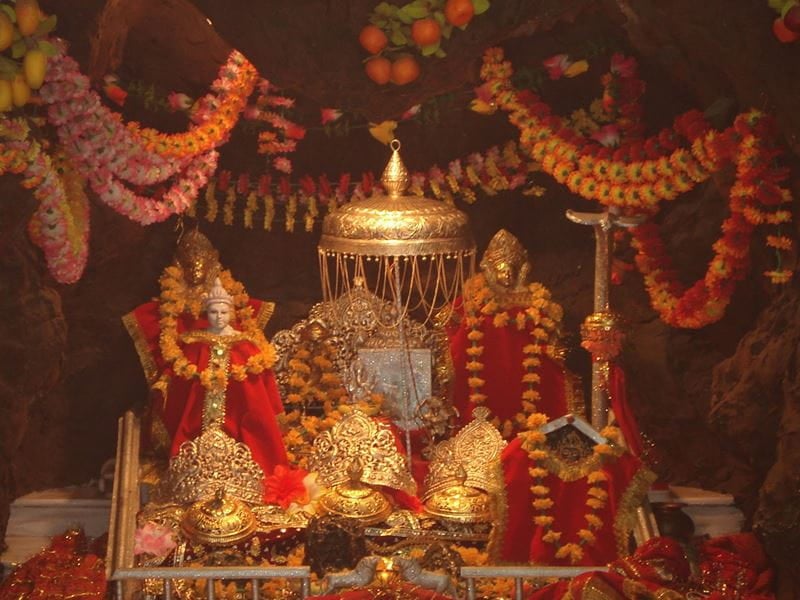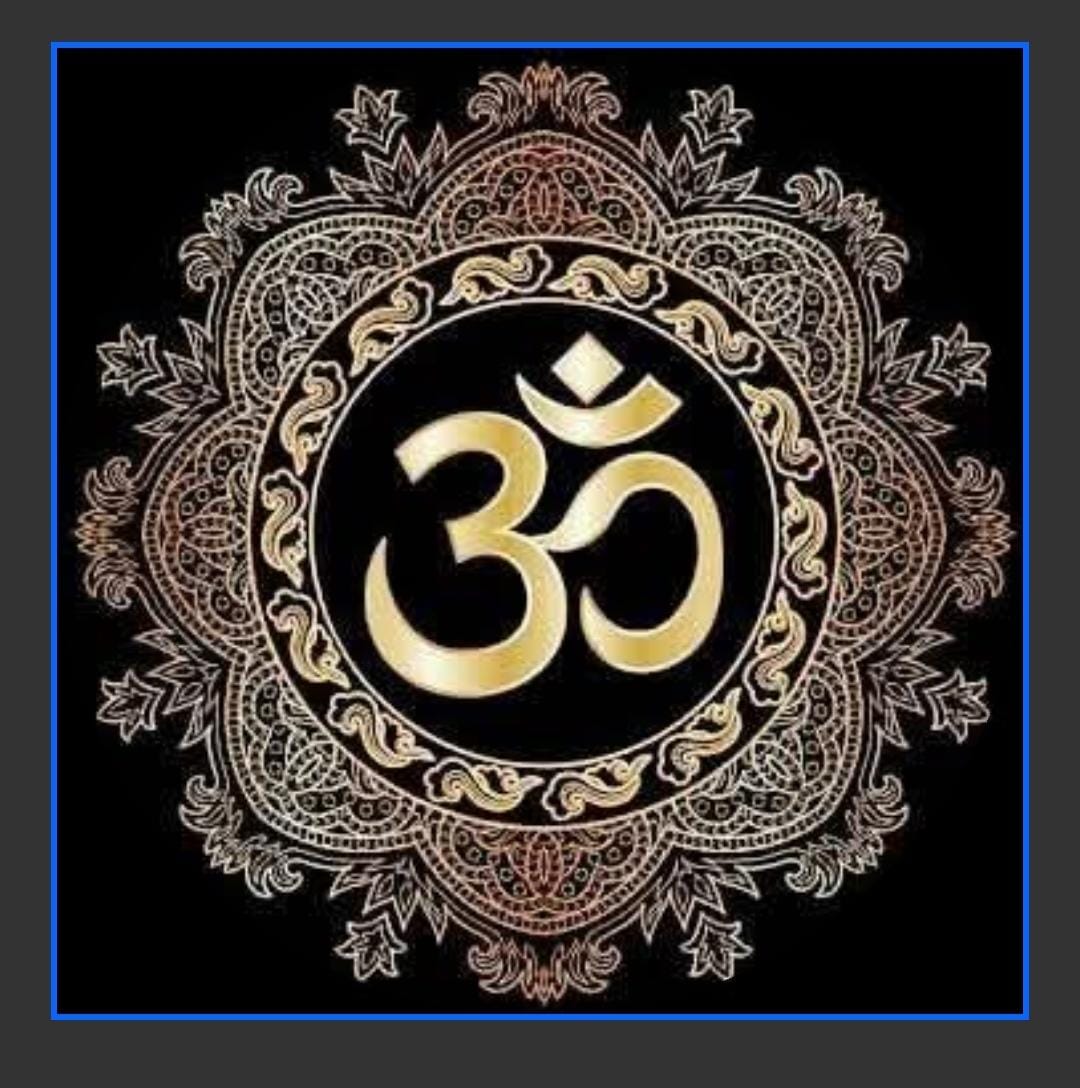



Mata Vaishno Devi Temple, Katra – A Sacred Pilgrimage Above the Clouds
A revered cave shrine dedicated to Goddess Vaishno Devi, perched at 5,200 ft within the Trikuta Hills, Katra’s Mata Vaishno Devi Temple is one of the most frequented pilgrimage destinations in India, drawing over 10 million devotees annually gurujisolutions.org+15mytravelboots.com+15amritara.co.in+15.
🕉️ Mythology & Historical Legends
- Divine Origin: In Treta Yuga, the combined powers of Mahalakshmi, Mahasaraswati, and Mahakali formed Goddess Vaishno Devi, also known as Vaishnavi.
- Legend of Bhairon Nath: The goddess took refuge in a cave to escape Tantric Bhairon Nath. She manifested in a tri‑headed form and beheaded him. He repented, became guardian Bhairon Nath, and earned a shrine near the Bhawan.
- Pandit Sridhar’s Discovery: Rediscovered the cave following a divine dream about 700–1,000 years ago .
- Shrine Board Formation: Shri Mata Vaishno Devi Shrine Board (SMVDSB) formed in 1986, greatly improving facilities and pilgrim management
🗻 Trek & Temple Structure
- Route: A 13 km trek from Katra to the cave shrine (“Bhawan”), passing through Banganga, Ardhkuwari, and culminating at the Sanji Chhat plateau incredibleindia.gov.in+10mytravelboots.com+10amritara.co.in+10.
- Shrines en route:
- Banganga Spring—legendary water from Vaishnavi’s arrow
- Ardhkuwari Cave—where she meditated for nine months
- Bhairon Nath Temple (~2.5 km from Bhawan) hinduamerican.org+11mytravelboots.com+11amritara.co.in+11.
- Cave Sanctum: Goddess appears as natural pindis—three rock formations symbolizing her three forms mytravelboots.com+5tfninternational.com+599pandit.com+5.
⏱️ Darshan, Timings & Facilities
- Open 24×7—but early morning or late-night scoops are best to avoid crowds
- Entry Requirements: Mandatory Yatra slip/registration, insurance included, available at counters or online amritara.co.in.
- Transport Options:
- Trek, palanquin, ponies
- Helicopter: Katra → Sanji Chhat (~7–8 min) with VIP entry benefits
- Battery car service uphill, now with a new ropeway from Bhawan to Bhairon Nath (3 min, supporting ~800 pilgrims/hour)
🌸 Festivals & Seasonal Flow
- Navaratri & Diwali: Peak crowd events, celebrated with grand rituals at the cave and Katra township .
- Daily Rituals: Aarti, Abhishek, Bhog (offerings), and Kirtan rituals carried out by shrine priests.
- Stampede Incident: On 1 Jan 2022, tragic stampede due to crowd surge, resulting in 12 deaths—leading to improved crowd regulation systems
🚗 Travel & Accessibility
- Location: Katra, Reasi District, Jammu & Kashmir.
- Airport:
- Jammu Airport (IXJ): 50–60 km
- Srinagar Airport also viable for combined pilgrimage en.wikipedia.org+15amritara.co.in+15blog.dharmikvibes.com+15en.wikipedia.org+4en.wikipedia.org+4incredibleindia.gov.in+4.
- Railway:
- SMVD Katra Station, direct connection via new Vande Bharat Express from Jammu & Srinagar (since June 2025) en.wikipedia.org+2en.wikipedia.org+2en.wikipedia.org+2.
- Bus & Local Transport:
- OSRTC/private buses to Katra.
- E-rickshaws, taxis, ponies, helicopter transfers available.
🏨 Facilities & Comfort
- Accommodations: Hotels, guesthouses, religious dormitories. SMVDSB & trusts provide lodging (often free/sliding scale) .
Top 10 Recommended Hotels :
- Amritara Maa Katra
- Hotel Asia
- Hotel Vaishnavi Inn
- Hotel Bhawani
- Hotel Devlok
- Hotel Katra Continental
- Hotel Vijayta
- Katra Continental
- Gurunanak Hotel
- Hotel BTK Residency
- Medical Support:
- SMVDSB medical aid posts en route
- Primary health center in Katra
- Major hospital in Reasi (~30 km) amritara.co.inmytravelboots.com.
- Pilgrim Amenities:
- Canteens and water stations along the trek
- Porters, pony-pullers, rest benches
- Public toilets maintained regularly
🛡️ Pilgrim Essentials & Health Advice
- Bag: Light daypack; usage of baggage lockers in Katra recommended.
- Health Kit: ORS, painkillers, bandages, sunscreen, warm layers (due to altitude chill).
- Common Issues: Fatigue, mild altitude sickness, dehydration—light acclimatization advised.
- Accidental Insurance: ₹1 lakh coverage included at registration amritara.co.in.
🌐 Inclusivity & Visitor Profiles
- Open to All: Suitable for families, solo pilgrims, seniors, children, groups; no gender restrictions—after Bhairon’s shrine, entry for all, but core cave area is cramped; elderly advised caution during movement.
- Non-Hindus: Allowed; shrine follows beliefs but is non-restrictive.
- Dress Code: Modest clothing recommended—no shorts or tight Western attire; shawls and long layers suggested.
🗣️ Language, Guides & Media
- Local: Dogri, Kashmiri
- Common: Hindi and English
- Guides: SMVDSB-certified guides (Hindi/English), available at Katra Vij checkpoint and with tour agencies.
- Mobile/Wi‑Fi: Strong cellular network along the trek; Wi‑Fi in hotels and medical points.
♿ Accessibility & Safety
- Physical Accessibility: Battery cars up to Bhawan; ropeway for further ascent; no wheelchair access inside cave.
- Safety: CCTV, security forces, volunteer supervisors.
- Cleanliness: Plastic-free zone, bio‑toilets and regular cleaning ensured by Shrine Board.
- Helpdesk: Multiple booths in Katra and on the trail for emergencies and queries.
🗺️ Nearby Temples & Sites
| Place | Details |
|---|---|
| Bhairon Nath Temple | ~2.5 km uphill; essential for completing pilgrimage |
| Banganga Spring | ~4 km; fresh water spot with mythology of Vaishnavi |
| Ardhkuwari Cave | ~6 km; 9‑month meditation site |
| Shiv Khori (Shiva Shrine) | ~70 km; significant cave shrine |
| Srinagar | Via new Vande Bharat; options for Gulmarg/Yatra extensions |
FAQ (Frequently Asked Questions for Temple Articles)
- What is the historical & mythological background?
See the legend of Goddess Vaishno Devi emerging from a cave, Bhairon Nath’s story, and rediscovery by Pandit Sridhar. - Key incidents & chronology?
Core lore, medieval rediscovery, shrine board creation (1986), ropeway inaugurated (2024), Vande Bharat launch (2025). - Main deity?
Goddess Vaishno Devi (a form of the Mother Goddess), revered in tri‑form. - Location specifics?
Katra, Reasi district, J&K; cave at 5,200 ft in Trikuta Hills. - Nearest transport?
Railway: SMVD Katra Vande Bharat; Airport: Jammu (50 km); Bus: OSRTC in Katra. - Darshan types & process?
Cave temple open 24×7 with mandatory registration; optional helicopter and ropeway access; ponies, porters, battery cars available. - Dress code?
Modest Indian/traditional attire; avoid shorts or Western wear. - Pilgrim facilities?
Accommodation, food stalls, medical aid, resting areas, lockers, guides, insurance. - Rituals & offerings?
Yatra registration, holy trek, yagna rituals, Aarti, Bhog, and shrine visits include Bhairon Nath. - Visitor experience by type?
Trek is physically moderate; assistance for elders and differently-abled is available; cave can feel crowded. - Best visit timing?
October–March (weather friendly); avoid monsoon/peak Navaratri rush. - Nearby attractions?
Bhairon Nath, Banganga, Ardhkuwari, Shiv Khori, and scenic Katra markets. - Etiquette & rules?
Removal of shoes before cave, do not push, avoid luggage indoors, respect serpent local beliefs. - Nearby health services?
SMVDSB medical aid posts en route; primary health center in Katra; Reasi hospital for severe issues. - Bag & baggage suggestions?
Light backpack with hydration and first-aid; leave large bags in lockers at Katra. - Essential medicines & gear?
ORS, sunblock, bandages, trekking shoes, warm clothes for upper cave. - Common health concerns?
Dehydration, fatigue—stay hydrated, pace yourself. - Guidance support?
Certified bilingual guides available; highly recommended for first-time pilgrims. - Local languages?
Dogri & Kashmiri locally, Hindi and English widely used. - Safety & security?
CCTV surveillance and police; lockers for belongings. - Connectivity?
Strong mobile network; Wi‑Fi in accommodations. - Accessibility features?
Battery car, ropeway, volunteer help—but no wheelchairs inside cave. - Cleanliness?
Daily cleaning, plastic bans, bio‑toilets; pilgrims requested to use dustbins. - Photography policy?
Forbidden inside cave and ropeway; permitted outside in generic areas. - Temple timings & closures?
Always open; stampede protocol since 2022; entry restrictions during heavy snowfall. - Crowd expectations?
Heavy during peak/holidays; moderate after midnight or early morning. - Volunteer assistance?
SMVDSB-run helpdesks, registered guides, physical volunteers. - Sustainability initiatives?
New ropeway, battery cars, plastic ban, green toilets. - Restrictions?
Non-Hindus can visit cave; no caste/gender restrictions; elderly with health issues advised caution. - Medical conditions to consider?
Cardiac, respiratory issues—seek medical help; acclimatize well. - Spiritual personalities nearby?
Temple-managed priests; visits by Sadhus and saints during Navaratri and Diwali. - Deity/cave imagery?
Use shrine board or licensed sources; embedded in the article. - Dress-code visual guide?
Suggest photos of shawled/traditional pilgrims on the trek. - Permitted interior visuals?
Only restricted photography allowed outside enclosures. - Any restrictions by religion, age, gender?
No restrictions for non-Hindus; motor assistance restricted for adults. - Nearby temples/rituals?
See table above (Bhairon Nath, Banganga etc) with distances and timings.

Leave a Reply